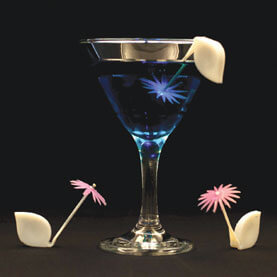Scientists and chefs join together to design culinary wonders inspired by nature

No one wants to find an insect in their drink, but a renowned chef and a team from the Massachusetts Institute of Technology (MIT) hope that a special cocktail accessory, designed on the basis of a water-dwelling insect, will delight drinkers instead of disgust them.
The tiny boat-like toy propels itself across the surface of the drink for up to two minutes, using a trick taken from nature. The boat contains a strong alcoholic drink, which is released into the cocktail at a constant rate through a slot at one end. The difference in the alcohol content between the two liquids creates a difference in the surface tension of the liquid, which propels the boat forward thanks to a phenomenon called the 'Marangoni effect'. Many water-dwelling insects rely on merangoni propulsion, but instead of bacardi rum 151 they release chemicals that change the surface tension of the liquid beneath their feet.
The gimmick was born after John Bush, a professor of applied mathematics at MIT, listened to a lecture on the science of cooking given by chef Jose Andres at Harvard University. Bosch suggested to Anders to collaborate on new culinary creations. "Most of my research has to do with facial tension," Bush says, "and facial tension is responsible for some interesting stunts that happen in the kitchen—or at the bar."
The researchers also designed a flower-shaped pipette, which the diner can dip into a refreshing cocktail to transfer a drop to the tongue. The petals of the pipette close when you take it out of the drink and trap the drop inside. This design is a reversal of how floating flowers, such as water lilies, close and trap an air pocket as the water surface rises. Bosch, Anders and their colleagues described their devices in the journal Bioinspiration & Biomimetics.
The researchers made prototype models of their developments on a XNUMXD printer, then created molds that allowed Enders and his assistants to make boats and pipettes from gelatin or hardened sugar. "The devices are designed to be not only practical and pleasing to the eye," says Bush, "but also edible."
The article was published with the permission of Scientific American Israel
